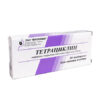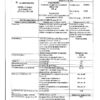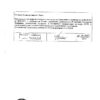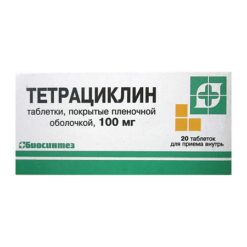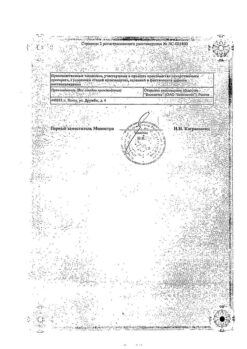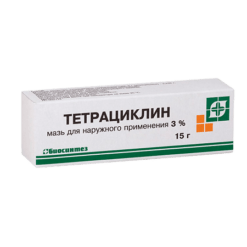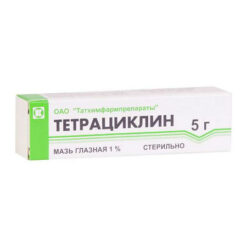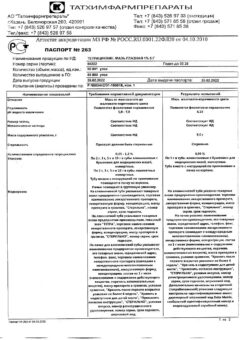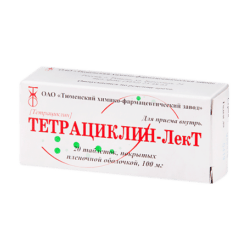No products in the cart.
Tetracycline, 100 mg 20 pcs.
€4.88 €4.33
Description
Tetracycline is active against Gram-positive microorganisms: Staphylococcus spp. (including Staphylococcus aureus, including penicillinase-producing strains), Streptococcus pneumoniae, Listeria spp, Bacillus anthracis, Clostridium spp., Actinomyces israelii; Gram-negative microorganisms: Haemophilus influenzae, Haemophilus ducreyi, Bordetella pertussis, Escherichia coli, Enterobacter spp. (including Enterobacter aerogenes), Acinetobacter spp, Klebsiella spp., Salmonella spp., Shigella spp., Yersinia pestis, Francisella tularensis, Bartonella bacilliformis, Vibrio cholerae, Vibrio fetus, Rickettsia spp., Borrelia burgdorferi, Brucella spp. (in combination with streptomycin); when contraindicated to use penicillins – Clostridium spp, Neisseria gonorrhoeae, Actinomyces spp.; also active against Calymmatobacterium granulomatis, Chlamydia trachomatis, Chlamydia psittaci, Mycoplasma pneumoniae, Treponema spp. Pseudomonas aeruginosa, Proteus spp., Serratia spp., most strains of Bacteroides spp. and fungi, viruses, Streptococcus pyogenes, Streptococcus faecalis are resistant to tetracycline.
Pharmacokinetics
Absorption – 75-77%, decreases with food, binding to plasma proteins – 55-65%. Time to reach maximum plasma concentration (TCmax) when administered orally – 2-3 hours (it may take 2-3 days to reach therapeutic concentration). During the next 8 hours, the concentration gradually decreases. Maximum drug concentration in plasma is 1.5-3.5 mg/l (a concentration of 1 mg/l is sufficient to achieve therapeutic effect).
In the body it is distributed unevenly: the maximum concentration of the drug is determined in the liver, kidneys, lungs and in organs with well developed reticulo-endothelial system – spleen, lymph nodes. The concentration in bile is 5-10 times higher than in blood serum. In thyroid and prostate tissues tetracycline concentration corresponds to that found in plasma; in pleural, ascitic fluid, saliva, milk of lactating women – 60-100% concentration in plasma. It accumulates in large quantities in bone tissue, tumor tissues, dentin and enamel of milk teeth. It poorly penetrates through the blood-brain barrier.
In intact cerebral membranes in the cerebrospinal fluid is not determined or detected in small amounts (5-10% of the concentration in plasma). In patients with diseases of the central nervous system, especially with inflammatory processes in the brain membranes, the concentration in cerebrospinal fluid is 8-36% of the plasma concentration. It penetrates through the placental barrier and into breast milk. Volume of distribution is 1.3-1.6 l/kg.
It is slightly metabolized in the liver. The half-life of the drug (T1/2) is 6-11 hours, with anuria 57-108 hours. In urine it is found in high concentration 2 hours after drug intake and remains for 6-12 hours; during the first 12 hours up to 10-20% of dose is excreted by kidneys. Smaller amounts (5-10% of the total dose) are excreted with bile in the intestine, where partial reverse absorption occurs, which contributes to prolonged circulation of the active substance in the body (intestine-hepatic circulation). Excretion through the intestine is 20-50%. With hemodialysis it is removed slowly.
Indications
Indications
Active ingredient
Active ingredient
Composition
Composition
1 tablet contains:
The active ingredient:
100 mg of tetracycline hydrochloride
How to take, the dosage
How to take, the dosage
Adults are prescribed 250 mg every 6 hours. Daily dose of the drug is up to 2 g.
Children over 7 years of age are prescribed in a dose of 25 mg/kg body weight every 6 hours.
Interaction
Interaction
Tetracycline hydrochloride forms insoluble complexes with calcium ions, iron and other metals, and therefore the drug should not be taken simultaneously with milk and dairy products (due to their calcium content); with antacids containing salts of aluminum, calcium, magnesium, as well as with iron preparations.
Special Instructions
Special Instructions
Due to the possible formation of insoluble complexes of tetracyclines with calcium and their deposition in the bone skeleton, enamel and dentin of teeth, drugs of tetracycline group are not recommended for use during pregnancy and in children under 7 years of age.
Contraindications
Contraindications
Side effects
Side effects
Nervous system and sensory organs: increased intracranial pressure, dizziness or unsteadiness.
Cardiovascular system and blood (hematopoiesis, hemostasis): hemolytic anemia, thrombocytopenia, neutropenia.
Gastrointestinal system disorders: decreased appetite, nausea, vomiting, diarrhea, glossitis, esophagitis, gastritis, stomach and duodenal ulcer, hypertrophy of papillae of tongue, dysphagia, hepatotoxic effect, increased liver transaminases activity, hyperbilirubinemia, pancreatitis, dysbacteriosis, antibiotic-associated diarrhea.
Urogenital system disorders: nephrotoxic effect, azotemia, hypercreatininemia.
Allergic reactions: maculopapular rash, skin hyperemia, angioedema, anaphylactoid reactions, drug-induced systemic lupus erythematosus.
Others: photosensitization, disorders of bone and dental tissue formation, discoloration of dental enamel in children, superinfection, candidiasis, hypovitaminosis B.
Similarities
Similarities
Additional information
| Shelf life | 3 years |
|---|---|
| Conditions of storage | In a dry place, at a temperature not exceeding 25 °C |
| Manufacturer | Biokhimik JSC, Russia |
| Medication form | pills |
| Brand | Biokhimik JSC |
Other forms…
Related products
Buy Tetracycline, 100 mg 20 pcs. with delivery to USA, UK, Europe and over 120 other countries.





